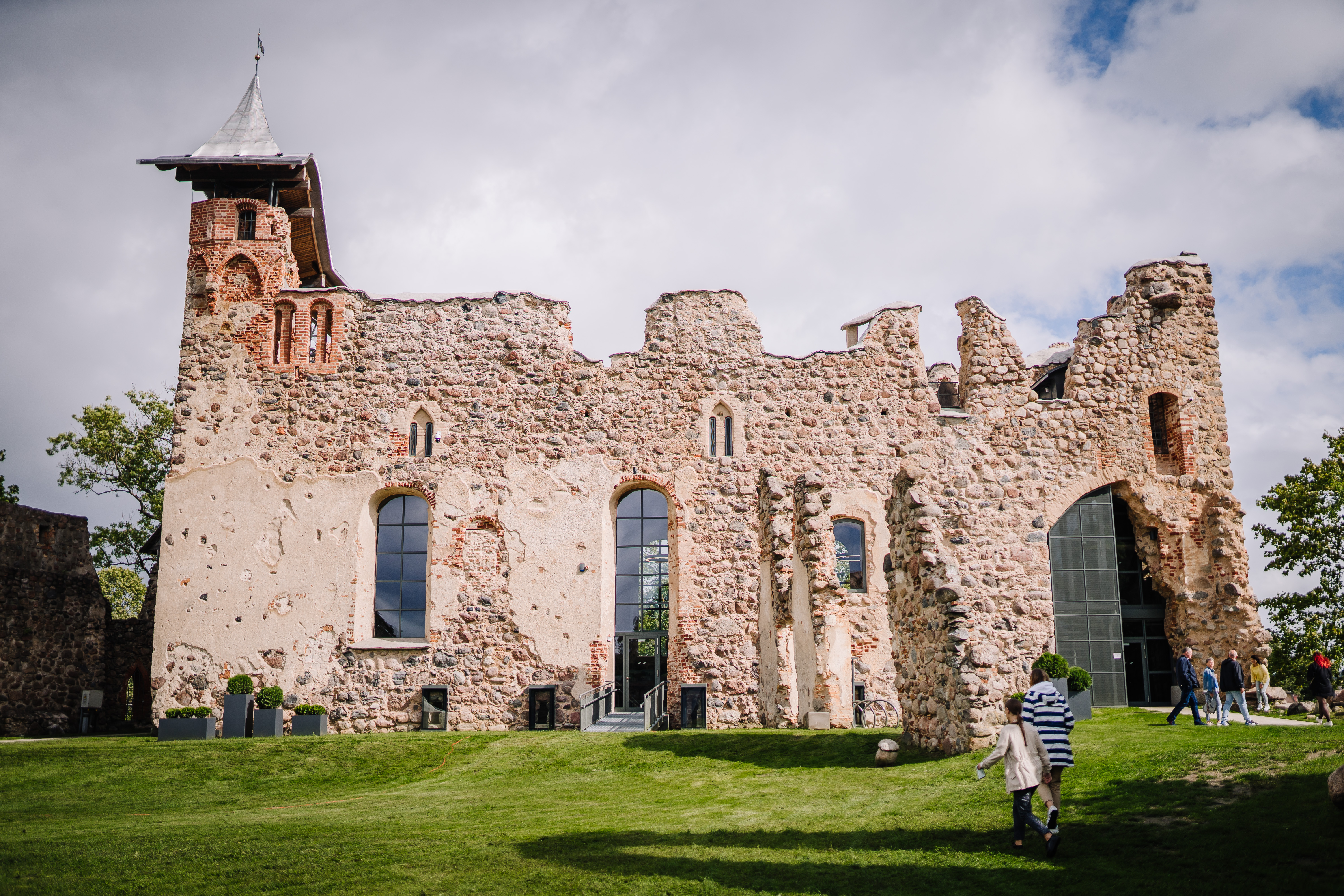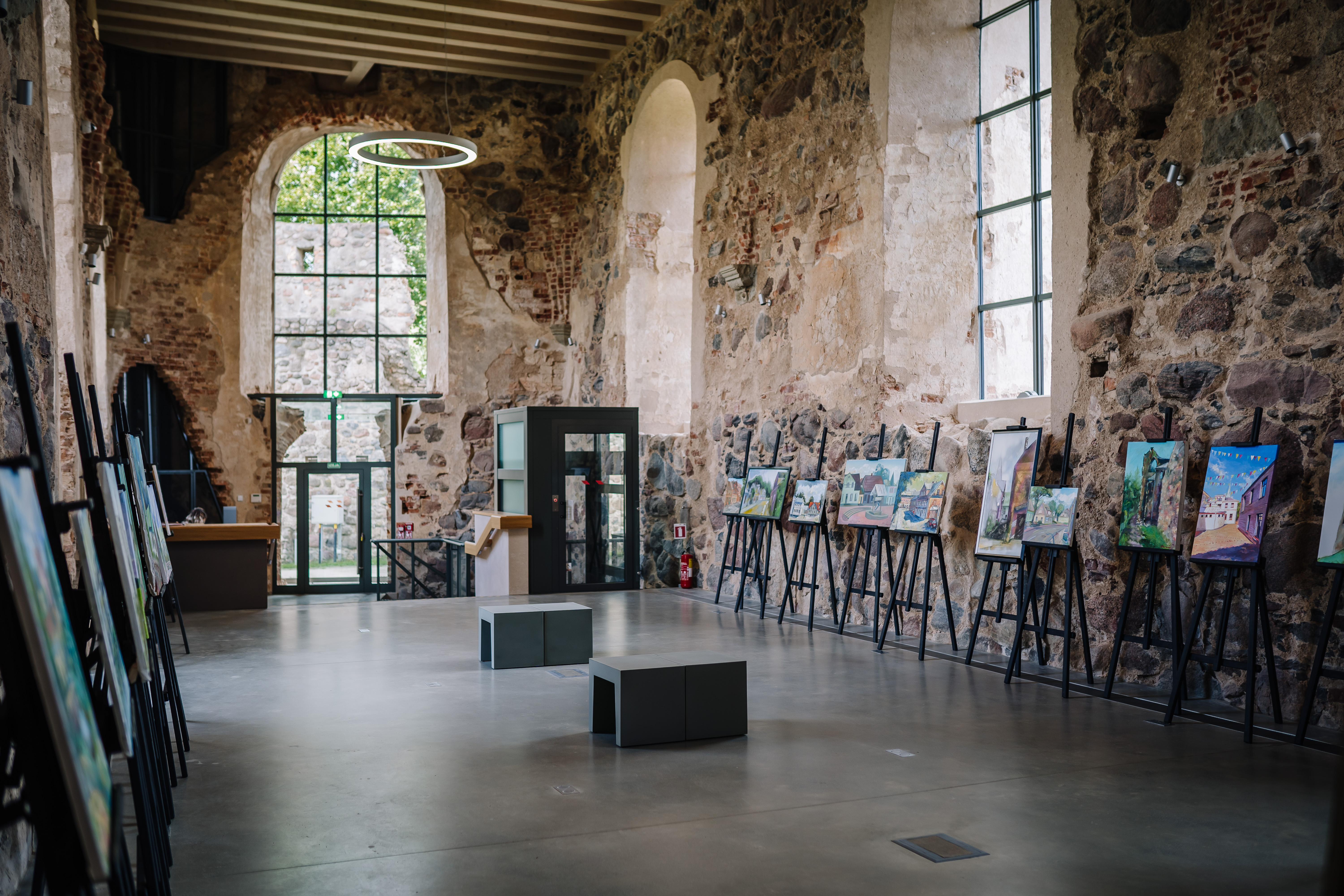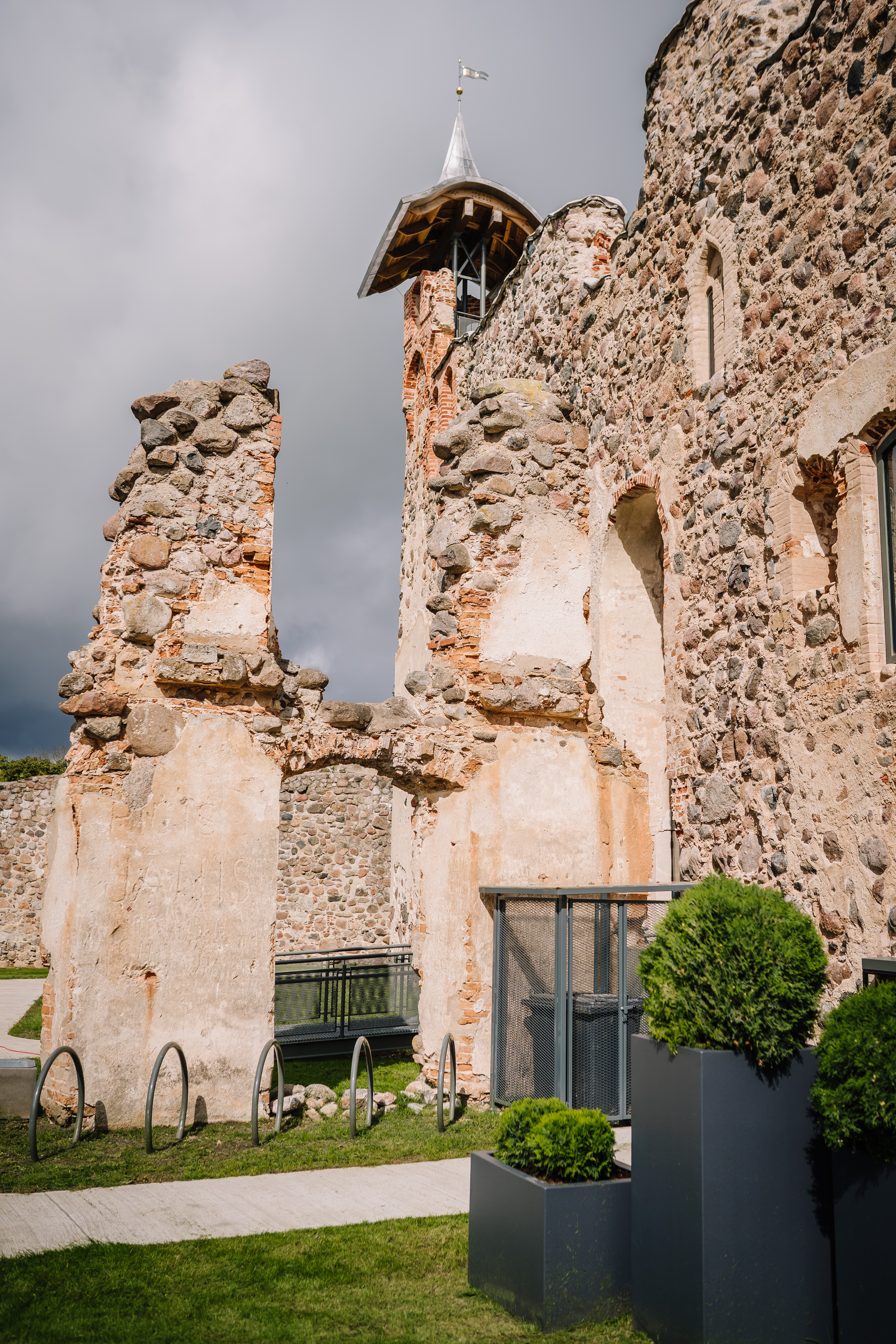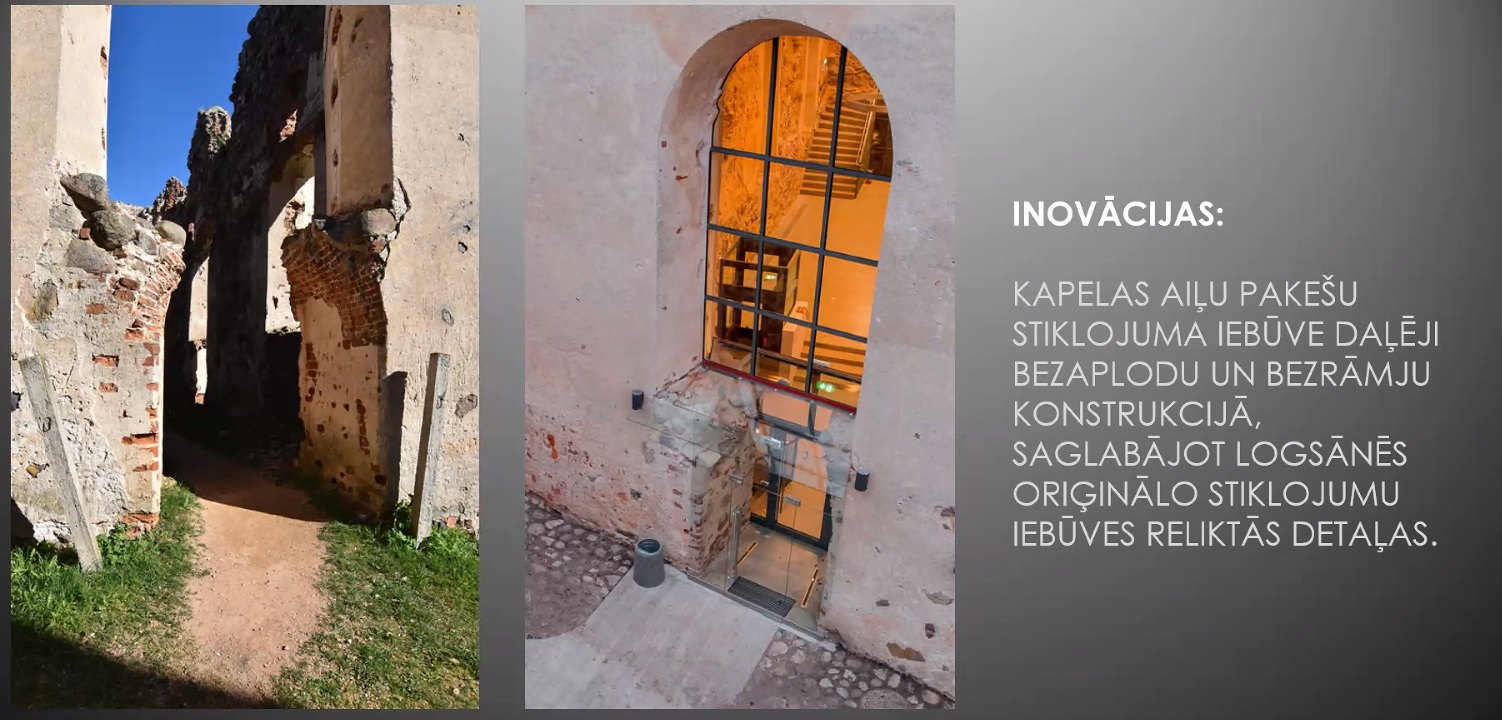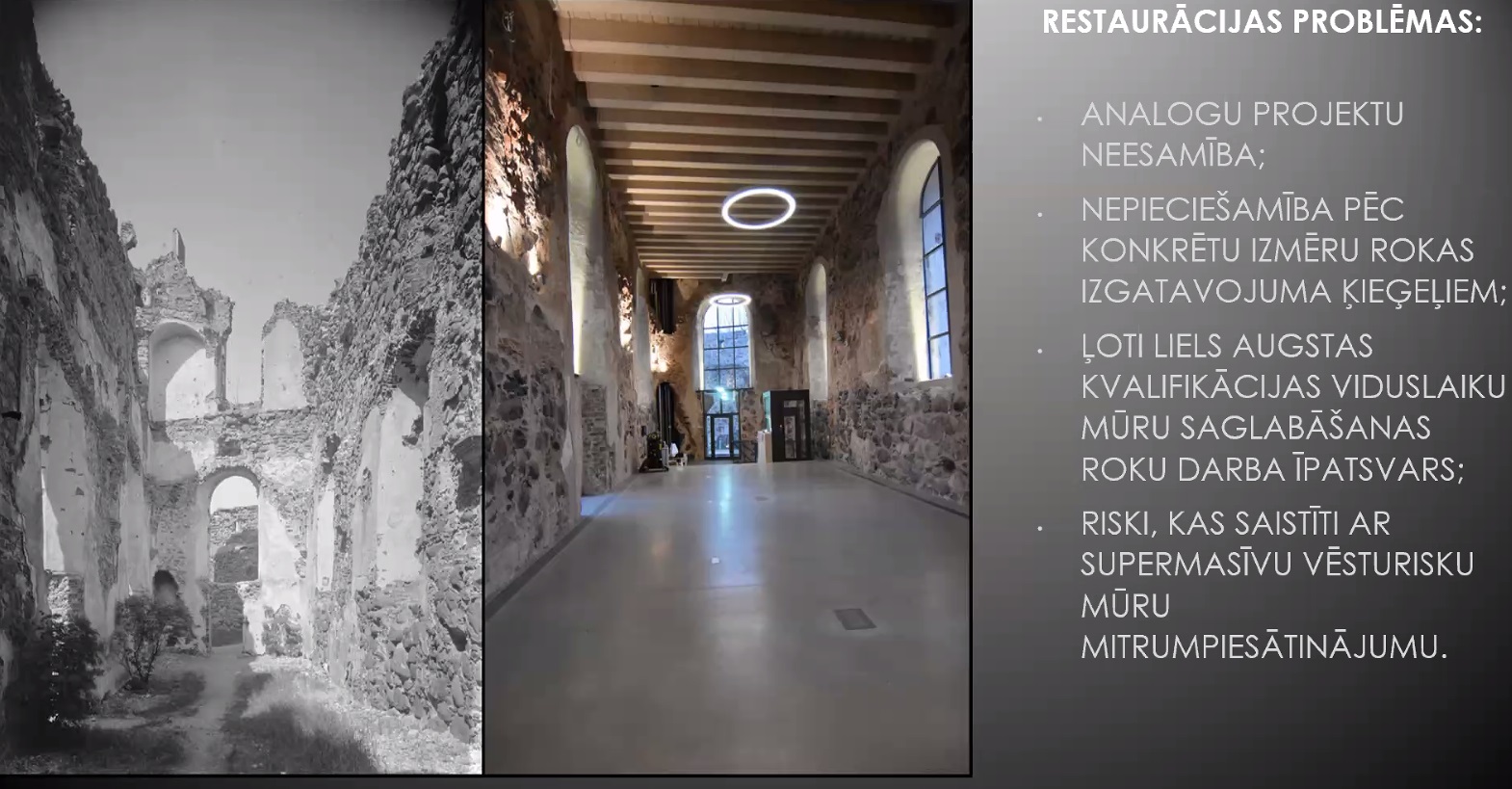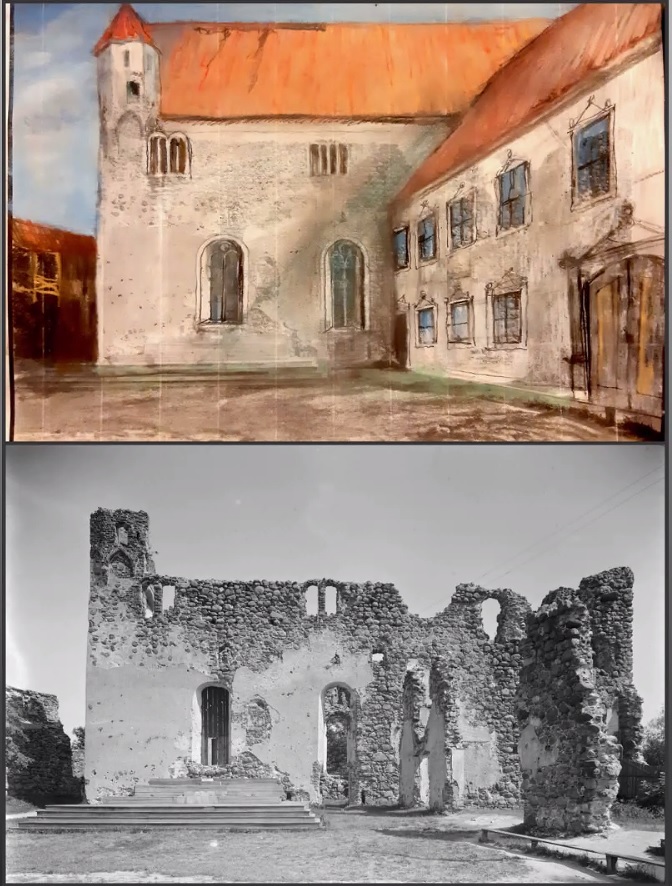Regaining a sense of belonging
Dobele Castle
"Preservation and development of important cultural heritage for the improvement of cultural tourism
After conservation and reconstruction works, Dobele Castle has become a multifunctional centre for culture, crafts and tourism development. During the construction works, archaeological research, conservation works and the construction of new infrastructure were carried out.
The castle was built in the middle of the 14th century and was inhabited until 1730. For 300 years the castle was uninhabited and thanks to a unique conservation concept, the castle has been reborn in a new, modern form.
The castle was built in the middle of the 14th century and was inhabited until 1730. For 300 years the castle was uninhabited and thanks to a unique conservation concept, the castle has been reborn in a new, modern form.
Latvia
Regional
Zemgale
It addresses urban-rural linkages
It refers to a physical transformation of the built environment (hard investment)
Yes
2020-12-07
Yes
ERDF : European Regional Development Fund
No
No
As an individual
To preserve, protect and develop important cultural and historical heritage in Zemgale by restoring cultural monuments of national importance in Dobele, creating new, complementary tourism services there, thus ensuring the development of their socio-economic potential and their integration into the local economy, in accordance with the Dobele Regional Development Programme
History
Culture hertage
Sustainability
Aesthetics
Community
From 2018 to 2020, significant conservation and reconstruction works were carried out in the chapel of the Livonian Order Castle in Dobele, an architectural monument of national importance, within the framework of the European Regional Development Fund co-financed project "Conservation and development of significant cultural heritage for improving the cultural tourism offer in the Zemgale region" (No 5.5.1.0/17/I/002) and with funds from the Dobele Municipality budget.
The investment investment ensures the sustainability of the cultural and natural heritage and a positive impact on the development of the socio-economic potential of the site and its integration into the structure of the local economy.
The conservation and reconstruction of the walls of the chapel of the Livonian Order of Dobele Castle resulted in the creation of the Dobele Castle Branch of the Dobele Regional Research Museum with multifunctional use of the premises, promoting economic and innovative use of the cultural heritage object and the development of new services.
Today we offer the opportunity to explore the history of the Castle and the story of its rebirth through guided tours, creative workshops. In 2022, the premises will be open for independent exhibition.
The investment investment ensures the sustainability of the cultural and natural heritage and a positive impact on the development of the socio-economic potential of the site and its integration into the structure of the local economy.
The conservation and reconstruction of the walls of the chapel of the Livonian Order of Dobele Castle resulted in the creation of the Dobele Castle Branch of the Dobele Regional Research Museum with multifunctional use of the premises, promoting economic and innovative use of the cultural heritage object and the development of new services.
Today we offer the opportunity to explore the history of the Castle and the story of its rebirth through guided tours, creative workshops. In 2022, the premises will be open for independent exhibition.
The Castle has been reborn in a new, modern look and the light is once again shining in the windows of the Castle. During the construction works, the architectural form of the palace was preserved in its entirety as the previous silhouette of the ruins. The level of the upper roof and the roof terrace are located between the walls of the two parts of the building; the new roof elements in the silhouette do not change the overall perception of the torsal silhouette of the ruins from a greater distance. From close distances, the new roof between the walls is only partially perceptible, and from most angles it is not perceptible at all. The castle walls were first conserved and critical losses were restored. The roof level of the castle has a viewing platform open to the public, while the basement, ground floor and first and second floors have exhibition halls.
The conservation and reconstruction of the chapel at Dobele Castle is a unique and innovative project. It was and is a dare, a risk, a challenge. Every detail, column, solution is an innovation, an individual and creative approach to the conservation of cultural heritage:
- The concept of the Dobele Castle construction project is unique thanks to the construction design solutions that created innovative solutions, working on the conservation of the walls instead of reconstruction;
- The roof terrace of Dobele Castle is the highest available viewpoint in Dobele;
- The castle has been reborn in a new form, where the spirit of the past and the future intermingle, symbolising our existence here and now - between historical periods. One that has already passed, the other that has not yet been reached.
The conservation and reconstruction of the chapel at Dobele Castle is a unique and innovative project. It was and is a dare, a risk, a challenge. Every detail, column, solution is an innovation, an individual and creative approach to the conservation of cultural heritage:
- The concept of the Dobele Castle construction project is unique thanks to the construction design solutions that created innovative solutions, working on the conservation of the walls instead of reconstruction;
- The roof terrace of Dobele Castle is the highest available viewpoint in Dobele;
- The castle has been reborn in a new form, where the spirit of the past and the future intermingle, symbolising our existence here and now - between historical periods. One that has already passed, the other that has not yet been reached.
Visitors to Dobele Castle are greeted by customer service specialists who listen to guests' and tourists' feedback and wishes, and each visitor receives undivided attention. Meetings with residents and an analysis of the region ensured an affordable admissions policy. Free events are regularly organised during the summer season, which contribute to attracting different groups of people.
The project envisaged the creation of a new cultural space, which enabled the municipality to expand the cultural services available to the inhabitants of the district.
The project envisaged the creation of a new cultural space, which enabled the municipality to expand the cultural services available to the inhabitants of the district.
The construction of engineering networks in the Dobele Livonian Order Castle complex provides a favourable environment for the promotion of entrepreneurship, acquiring a socially, culturally and economically significant place of new quality - as a factor for the economic growth of Dobele district, increasing the attractiveness of the living environment and the development of entrepreneurship.
The project idea promotes the preservation and meaningful use of the historical value of the site, with a sense of responsibility to pass these values on to future generations.
An attractive and innovative offer of souvenirs has been developed in cooperation with local craftsmen and entrepreneurs. In cooperation with the Institute of Horticulture, local plant breeders and entrepreneurs, a medicinal herb garden was established in the grounds of the Dobele Castle complex.
Thanks to the revival of Dobele Castle, the areas in the immediate vicinity of the Castle are also becoming more attractive and interesting for tourists, a good example being the "re-population" of the nearby River Bērze, where local entrepreneurs have created their own offer for the development of water tourism, creating new tourism products for the inhabitants of the municipality.
In cooperation with the Dobele District Tourism Centre, work is underway to develop new routes (providing tourist accommodation and catering services, etc.).
The project idea promotes the preservation and meaningful use of the historical value of the site, with a sense of responsibility to pass these values on to future generations.
An attractive and innovative offer of souvenirs has been developed in cooperation with local craftsmen and entrepreneurs. In cooperation with the Institute of Horticulture, local plant breeders and entrepreneurs, a medicinal herb garden was established in the grounds of the Dobele Castle complex.
Thanks to the revival of Dobele Castle, the areas in the immediate vicinity of the Castle are also becoming more attractive and interesting for tourists, a good example being the "re-population" of the nearby River Bērze, where local entrepreneurs have created their own offer for the development of water tourism, creating new tourism products for the inhabitants of the municipality.
In cooperation with the Dobele District Tourism Centre, work is underway to develop new routes (providing tourist accommodation and catering services, etc.).
Dobele municipality in cooperation with municipalities of Zemgale region decided to participate in the European Union funding within the framework of the Operational Programme "Growth and Employment" priority axis "Environmental protection and resource use efficiency", specific support objective 5.5.1 "Preserve, protect and develop important cultural and natural heritage, as well as develop services related to it".
On 28 July 2016, the Dobele Municipality Council approved Decision No. 147/7 "On approval of the updated investment plan for the Dobele Municipality Development Programme 2014-2020".
The Dobele Municipality project manager developed the Dobele Castle project. Cooperation with municipalities contributed to the creation of a service cluster for the Zemgale region and strengthened the tourism network.
On 28 July 2016, the Dobele Municipality Council approved Decision No. 147/7 "On approval of the updated investment plan for the Dobele Municipality Development Programme 2014-2020".
The Dobele Municipality project manager developed the Dobele Castle project. Cooperation with municipalities contributed to the creation of a service cluster for the Zemgale region and strengthened the tourism network.
Dobele Castle has become a centre of cultural heritage and interactive culture, education, crafts and tourism, providing and offering new services:
- a multifunctional hall (providing lectures, seminars, conferences, scientific presentations of new technologies and new products, open-air workshops for craftsmen, home producers, archaeologists, scientists and other specialists);
- interactive public entertainment and education.
Dobele Palace is a branch of Dobele Museum of Regional History, which provides quality coverage of excursions and museum-educational activities. The museum's materials and staff expertise are an important information resource for content development. The museum's pedagogical lessons are based on the museum's materials and the results of the Dobele Castle research. The information provided to tourists is based on research carried out by archaeologists and historians (A. Tomašūns, M. Ruša, J. Daiga), as well as lectures by the author of the construction project, Pēteris Blūms, on the process of the castle's revival.
- a multifunctional hall (providing lectures, seminars, conferences, scientific presentations of new technologies and new products, open-air workshops for craftsmen, home producers, archaeologists, scientists and other specialists);
- interactive public entertainment and education.
Dobele Palace is a branch of Dobele Museum of Regional History, which provides quality coverage of excursions and museum-educational activities. The museum's materials and staff expertise are an important information resource for content development. The museum's pedagogical lessons are based on the museum's materials and the results of the Dobele Castle research. The information provided to tourists is based on research carried out by archaeologists and historians (A. Tomašūns, M. Ruša, J. Daiga), as well as lectures by the author of the construction project, Pēteris Blūms, on the process of the castle's revival.
The conservation and reconstruction of the chapel at Dobele Castle is a unique and innovative project. It was and is a dare, a risk, a challenge. Every detail, column, solution is an innovation, an individual and creative approach to the conservation of cultural heritage:
- The concept of the Dobele Castle construction project is unique thanks to the construction design solutions that created innovative solutions, working on the conservation of the walls instead of reconstruction;
- The roof terrace of Dobele Castle is the highest available viewpoint in Dobele;
- The castle has been reborn in a new form, where the spirit of the past and the future intermingle, symbolising our existence here and now - between historical periods. One that has already passed, the other that has not yet been reached.
- The concept of the Dobele Castle construction project is unique thanks to the construction design solutions that created innovative solutions, working on the conservation of the walls instead of reconstruction;
- The roof terrace of Dobele Castle is the highest available viewpoint in Dobele;
- The castle has been reborn in a new form, where the spirit of the past and the future intermingle, symbolising our existence here and now - between historical periods. One that has already passed, the other that has not yet been reached.
Architect Pēteris Blūms says: "I will not hesitate to say that here in Latvia we have implemented a unique conservation project in Europe, because we have integrated new buildings into the ancient ensemble, while preserving the entire ancient intact for future generations. Here everything is accessible and visible, not hidden and enclosed in glass. My concept was to make this place accessible to the city dweller, the history researcher, the child, the tourist, to linger for a while and enjoy its ancient atmosphere in a comfortable environment. I am glad that it has succeeded!"
This project is one of the exemplary projects in the field of conservation, as a lot of effort has gone into the preservation of the walls. The stones had to be reinforced one by one, and to find their original place again, which was a real challenge. Despite the constraints imposed by the pandemic, the craftsmen managed to organise the work so that there were no breaks and to hand over the site on time. Dobele Castle ruins will become an integral part of Latvian building culture.
This project is one of the exemplary projects in the field of conservation, as a lot of effort has gone into the preservation of the walls. The stones had to be reinforced one by one, and to find their original place again, which was a real challenge. Despite the constraints imposed by the pandemic, the craftsmen managed to organise the work so that there were no breaks and to hand over the site on time. Dobele Castle ruins will become an integral part of Latvian building culture.
The methodology used in the project - the concept of preservation of walls - envisages the conservation of existing walls, preserving the existing form, rather than artificially restoring historical evidence for which there is no data.
The project envisages that the existing ruins are preserved and given a new function. The wall is transformed into a new building with historical breath. The spaces are redistributed and a new service is created. The architect's brief was to create a cultural space for contemporary needs.
The project envisages that the existing ruins are preserved and given a new function. The wall is transformed into a new building with historical breath. The spaces are redistributed and a new service is created. The architect's brief was to create a cultural space for contemporary needs.
The project addresses the non-functional use of the ruins. The ruins in the urban environment showed the remains of stone, symbolising the existence of a non-existent building. By preserving the ruins and giving them a new lease of life, the function is removed from the slum/ruin and an important accent is given to the urban environment. The building historically served as a chapel, today it is a cultural and historical space for modern purposes, bringing together the inhabitants and visitors of the district.
Dobele Municipality has carried out the conservation of the walls of the chapel of the Livonian Order of Dobele Castle and the construction of new infrastructure, creating space for the Dobele Municipality Museum, giving space to people who need it most and strengthening local patriotism. The project has contributed significantly to the development of the area, strengthening Dobele as a tourist destination.
The architectural form of the castle has been preserved in its entirety as the silhouette of the former ruins, thus giving the castle a new look, where the spirit of the past and the future are intertwined.
The architectural form of the castle has been preserved in its entirety as the silhouette of the former ruins, thus giving the castle a new look, where the spirit of the past and the future are intertwined.

